Marine Life & Conservation
Diving the Wrecks of Mauritius (Watch Video)
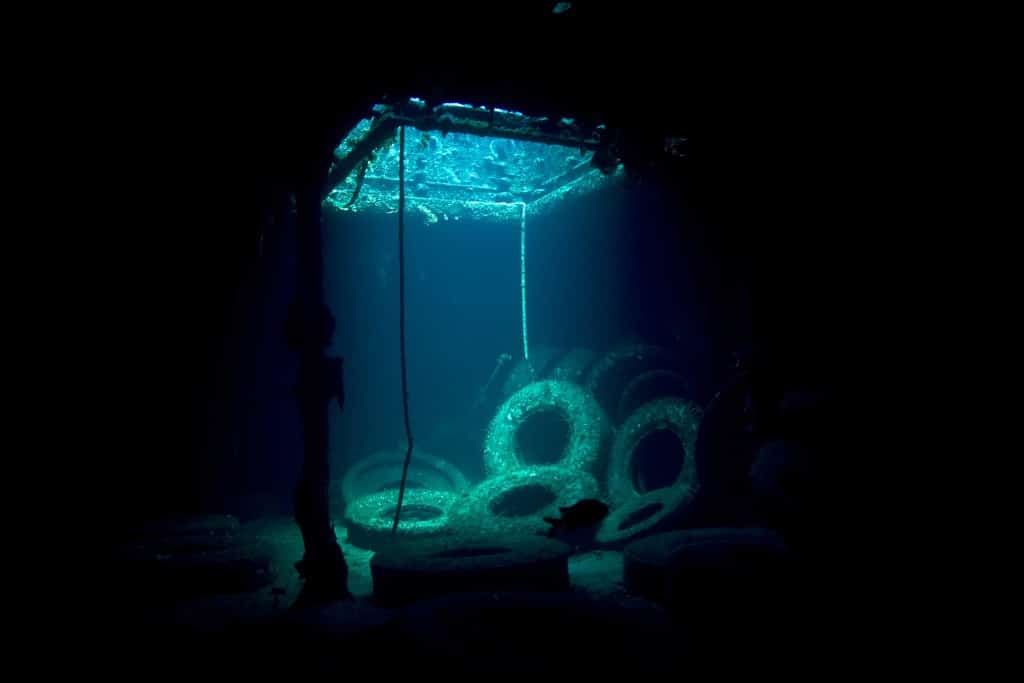
Over 480 ships have been wrecked off the coast of Mauritius over the last 400 years. Most of them have disintegrated or disappeared. You will not be able to dive Le Coureur or the Saint Gerain, the notorious slavers of the 18th century that foundered with their human cargoes off the coast of Mauritius. They are now just a shameful memory and a collection of artefacts in the National History museum. Treasure hunters pillaged many of the earlier wrecks until the Mauritius Government banned the removal of undersea artifacts, and began sinking condemned ships to create artificial reefs.
Most of these wrecks are within easy reach of the dive centres in the North, and a Safari trip to Coin de Mire makes a great day’s diving. You take 2 or 3 tanks each, the boat loads up with delicious snacks, water or juice and often a light lunch. Coin de Mire Island, so called because it’s shaped like the wedge or quoin that gunners used to raise or lower the barrels of their cannons, is a National Park, and the breeding ground for the long tailed Tropicbird. It’s a short 10-15 minute boat ride.
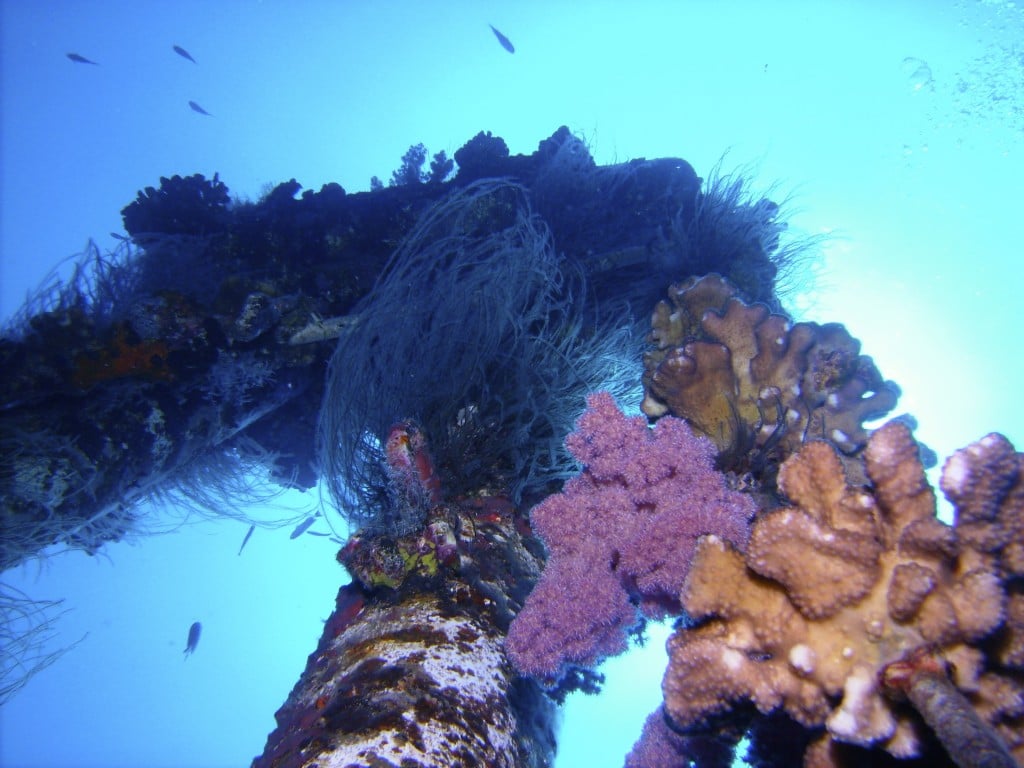
The Djabeda wreck lies at an average depth of 24 meters, from 20 metres on the mast to 32 at the keel, with dense shoals of fusiliers and blue banded snappers, scorpionfish, two massive Javanese Moray eels, rays in the sand and exquisite corals. It was sunk in 1967, and parts of it have scattered across the sand, offering additional hiding places for marine life. There is a pair of sling-jaw wrasses living and breeding there as well, worth looking out for them as they are uncommon. It is also rich in colourful corals and almost fully intact.
After 20 minutes on the wreck, you fin towards the Island and decompress for the rest of the 50 minute dive time in Confetti Bay, an exquisite shallow site just off the Island, where you have snacks and prepare for the second dive. Bliss.
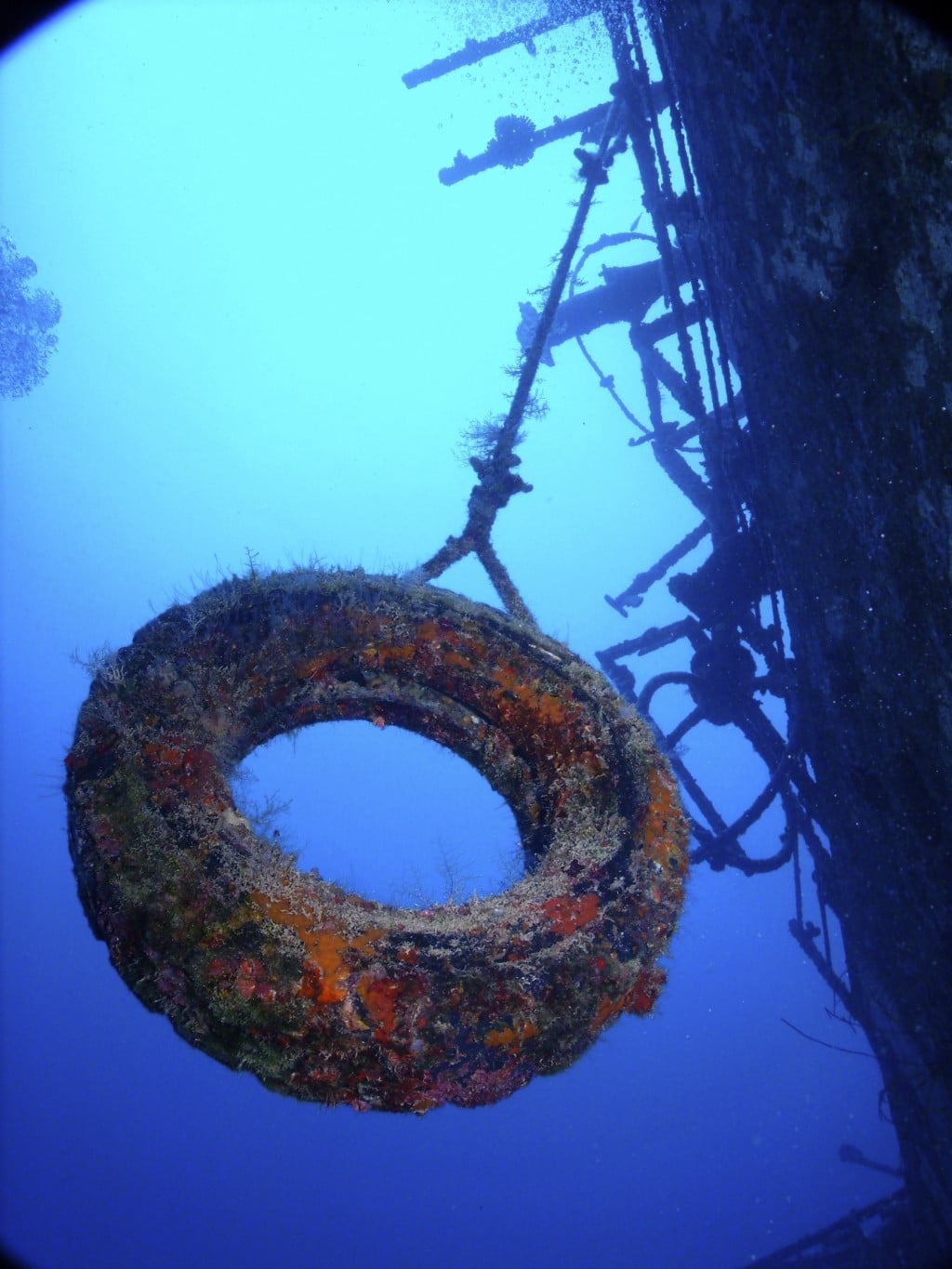
The Silverstar is 5 minutes from Pereybere, but its much deeper from 39 to 28 metres. It’s absolutely stunning, because it is in the deep blue, resting on the white, white sand, and looms out of the ocean like a fantastical pirate ship. Wreck penetration is possible for qualified divers. You need a good torch and once you are into the hold, it’s almost sinister, but filled with crustaceans and morays. Around the mast there are massive shoals, with a resident school of spade fish and orbicular batfish. This is a huge wreck, with an intact propeller at 40 metres, plenty of coral growth, and is best dived with Nitrox, but you need to watch your computer. It was sunk away from the reefs, so this is a short but dramatic dive.
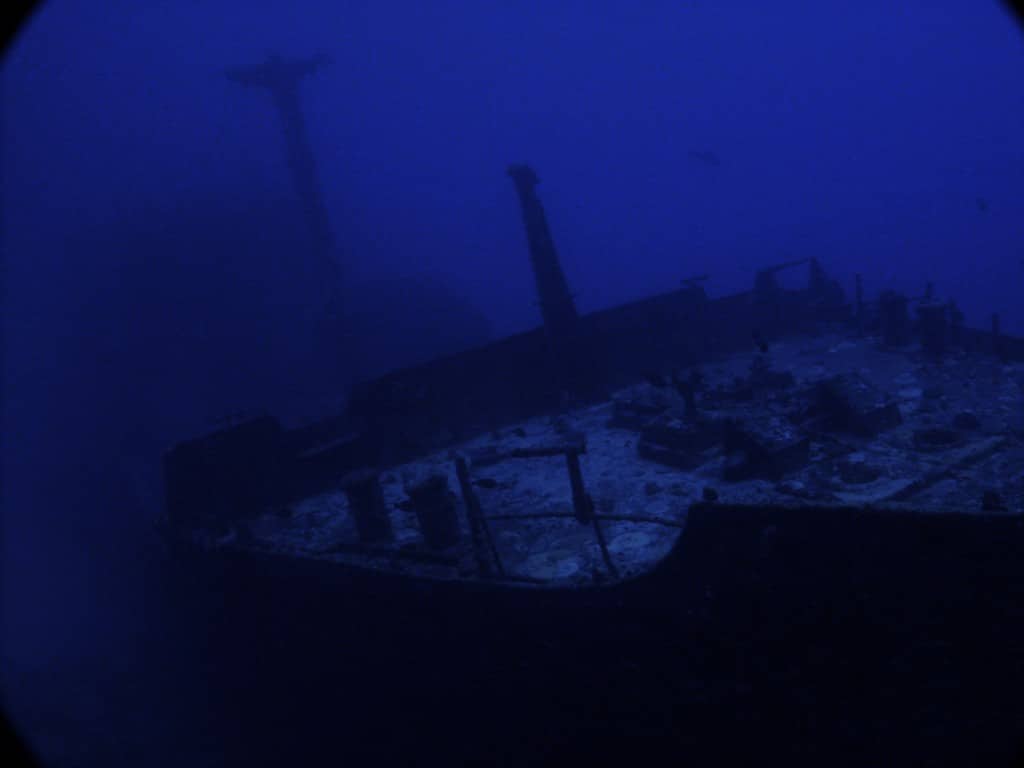
Stella Maru is an old Japanese fishing trawler was deliberately sunk in 1987 by the Mauritius Conservation Society to create an artificial reef, and it is almost fully intact. It has the aggressive oriental look of those Japanese boats you see in WWII movies. It’s full of shoals of blue banded snappers, giant morays and scorpionfish, but it is also a fabulous photographic subject. We recently found a hairy frogfish there, and huddled against a broken portion of the superstructure was a very small gurnard, that amazing little guy with wings and legs like a crayfish.
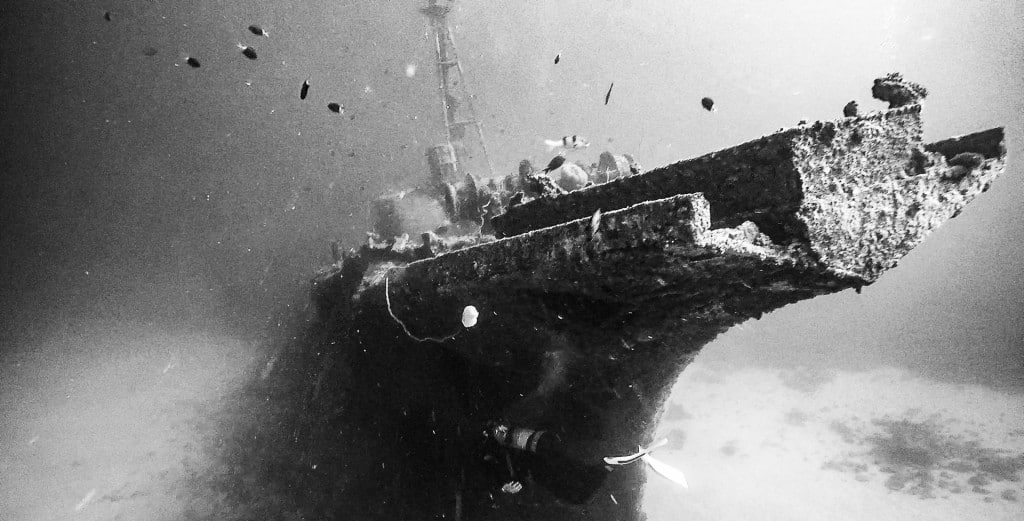
The Emily and Waterlily were sunk in 1981, and they lie in fairly shallow water. They are a superb example of how quickly soft corals can grow, and how rapidly they become home to a host of tiny sea creatures. Both wrecks are abundant with soft corals and tiny juveniles, creating a photographer’s paradise with white sand, blue water and lilac, purple, blue and pink soft corals. This is often done as a 2 tank dive, with snacks on the boat and a visit to one of the coral and reef fish infested sites in the area nearby.
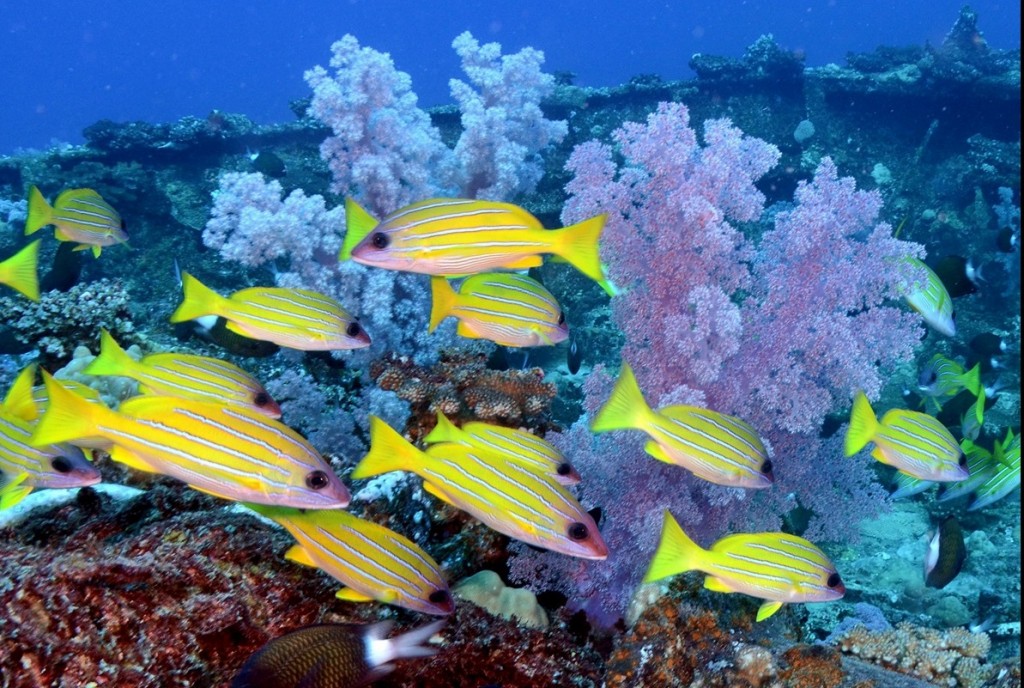
Pics: Thanks to Abdul Khathlan for the pic of the shoals on Djabeda.
Copyright 2018 Ocean Spirit, Mauritius – www.osdiving.com
Blogs
The Ocean Cleanup Breaks 10,000,000 KG Barrier

The Ocean Cleanup, the global non-profit project, has removed a verified all-time total of ten million kilograms (22 million lbs.) of trash from oceans and rivers around the world – approximately the same weight as the Eiffel Tower.
To complete its mission of ridding the oceans of plastic, The Ocean Cleanup uses a dual strategy: cleaning up the Great Pacific Garbage Patch (GPGP) to remove the plastic already afloat in the oceans, while stopping the flow of plastic from the world’s most polluting rivers.
Through cleaning operations in the GPGP and in rivers in eight countries, the cumulative total of trash removed has now surpassed ten million kilograms. This milestone demonstrates the acceleration of The Ocean Cleanup’s impact, while underlining the astonishing scale of the plastic pollution problem and the need for continued support and action.
While encouraging for the mission, this milestone is only a staging point: millions more tons of plastic still pollute our oceans and The Ocean Cleanup intends to continue learning, improving and innovating to solve this global catastrophe.
This announcement comes as governments from around the world meet to continue negotiations to develop a new legally binding instrument to end plastic pollution at INC4 in Ottawa, Canada. Representatives of The Ocean Cleanup will be in attendance and the organization will be urging decision-makers to collaborate towards a comprehensive and ambitious global treaty which addresses plastic at all stages of its life cycle and in all marine environments worldwide, including in areas beyond national jurisdiction.
It is encouraging to see that the need for remediation is reflected in the various options for potential treaty provisions. It is essential that the final treaty contains clear targets for the remediation of legacy plastic pollution, and reduction of riverine plastic emissions.
Tackling plastic pollution requires innovative and impactful solutions. The treaty should therefore incentivize the innovation ecosystem by fostering innovations that make maximal use of data, technology and scientific knowledge – such as those designed and deployed by The Ocean Cleanup.
‘After many tough years of trial and error, it’s amazing to see our work is starting to pay off – and I am proud of the team who has brought us to this point.’ said Boyan Slat, Founder and CEO of The Ocean Cleanup. ‘While we still have a long way to go, our recent successes fill us with renewed confidence that the oceans can be cleaned.’
The Ocean Cleanup was founded in 2013 and captured its first plastic in 2019, with the first confirmed catch in the GPGP coming soon after the deployment of Interceptor 001 in Jakarta, Indonesia. After surpassing one million kilograms of trash removed in early 2022, the non-profit project has since progressed to the third iteration of its GPGP cleaning solution, known as System 03, and a network of Interceptors currently covering rivers in eight countries, with more deployments set for 2024.
About The Ocean Cleanup
The Ocean Cleanup is an international non-profit organization that develops and scales technologies to rid the world’s oceans of plastic. They aim to achieve this goal through a dual strategy: stemming the inflow via rivers and cleaning up the legacy plastic that has already accumulated in the ocean. For the latter, The Ocean Cleanup develops large-scale systems to efficiently concentrate the plastic for periodic removal. This plastic is tracked and traced through DNV’s chain of custody model to certify claims of origin when recycling it into new products. To curb the tide via rivers, The Ocean Cleanup has developed Interceptor™ solutions to halt and extract riverine plastic before it reaches the ocean. Founded in 2013 by Boyan Slat, The Ocean Cleanup now employs a broadly multi-disciplined team of approximately 140. The foundation is headquartered in Rotterdam, the Netherlands.
For more information, visit: theoceancleanup.com and follow @theoceancleanup on social media.
Marine Life & Conservation
Steve Backshall to headline Shark Trust’s flagship event: For the Love of Sharks

Join a host of amazing, shark loving, speakers including Steve Backshall and the Shark Trust team for an evening celebrating shark conservation at the Royal Geographical Society in London this November.
Date: 29th November 2024
Time: 6-10pm
Location: Royal Geographical Society, London
Tickets: https://www.sharktrust.org/Event/flos24
The event will be a celebration of all things shark. Those lucky enough to get hold of tickets will hear from engaging guest speakers with a passion for sharks.
The line-up includes (*subject to change if unforeseen circumstances arise)
Steve Backshall: One of television’s busiest presenters, BAFTA award-winning wildlife expert Steve has been passionate about the wild world ever since he was young.
Steve’s impressive TV career has taken him all around the world, investigating a wide array of species and environments. Steve has filmed over 100 hours of children’s wildlife programmes with the BAFTA award winning Deadly 60 franchise and recently, with Sky Nature, for his new series ‘Whale with Steve Backshall’. He has been a patron for the Shark Trust for 10 years.
Simon Rogerson: is a photojournalist specialising in natural history, diving and the sea.
He is editor of SCUBA magazine, the official journal of the British Sub-Aqua Club. Simon started his career as a crime reporter but gravitated towards his ‘less depressing’ interest in underwater exploration, joining the staff of DIVE magazine in 1999. In 2005 he was named ‘Editor of the Year’ in the PPA’s Independent Publishing Awards. Simon also works as a freelance writer, contributing frequently to the Sunday Times and Telegraph, in addition to BBC Wildlife, Esquire, and a host of international diving magazines. He is the author of a book, Dive Red Sea, published by Ultimate Sports. Now based in Berkshire, Simon has been a Patron of the Shark Trust for 20 years.
More speakers to be announced soon. Head to the Shark Trust website to learn more.
The evening will also allow guests the final chance to see the Oceanic 31, shark art exhibition. Some of the artwork will be auctioned/raffled at the event, while the rest will be auctioned online to raise money for the Shark Trust Oceanic Programme.
For the Love of Sharks is an evening with something for everyone who is interested and fascinated by sharks. Join the Shark Trust, their Patrons, Trustees and Staff, along with a host of supporters for this celebration of shark conservation.
For more information or to buy a ticket: https://www.sharktrust.org/Event/flos24
-

 News3 months ago
News3 months agoCapturing Critters in Lembeh Underwater Photography Workshop 2024: Event Roundup
-

 Marine Life & Conservation Blogs3 months ago
Marine Life & Conservation Blogs3 months agoCreature Feature: Swell Sharks
-

 Blogs2 months ago
Blogs2 months agoMurex Resorts: Passport to Paradise!
-

 Blogs2 months ago
Blogs2 months agoDiver Discovering Whale Skeletons Beneath Ice Judged World’s Best Underwater Photograph
-

 Gear Reviews3 weeks ago
Gear Reviews3 weeks agoGEAR REVIEW – Revolutionising Diving Comfort: The Sharkskin T2 Chillproof Suit
-

 Gear Reviews3 months ago
Gear Reviews3 months agoGear Review: Oceanic+ Dive Housing for iPhone
-

 News2 months ago
News2 months agoPADI Teams Up with Wellness Brand Neuro to Drive Ocean Change and Create a Blue State of Mind
-

 Marine Life & Conservation2 months ago
Marine Life & Conservation2 months agoSave the Manatee Club launches brand new webcams at Silver Springs State Park, Florida

















